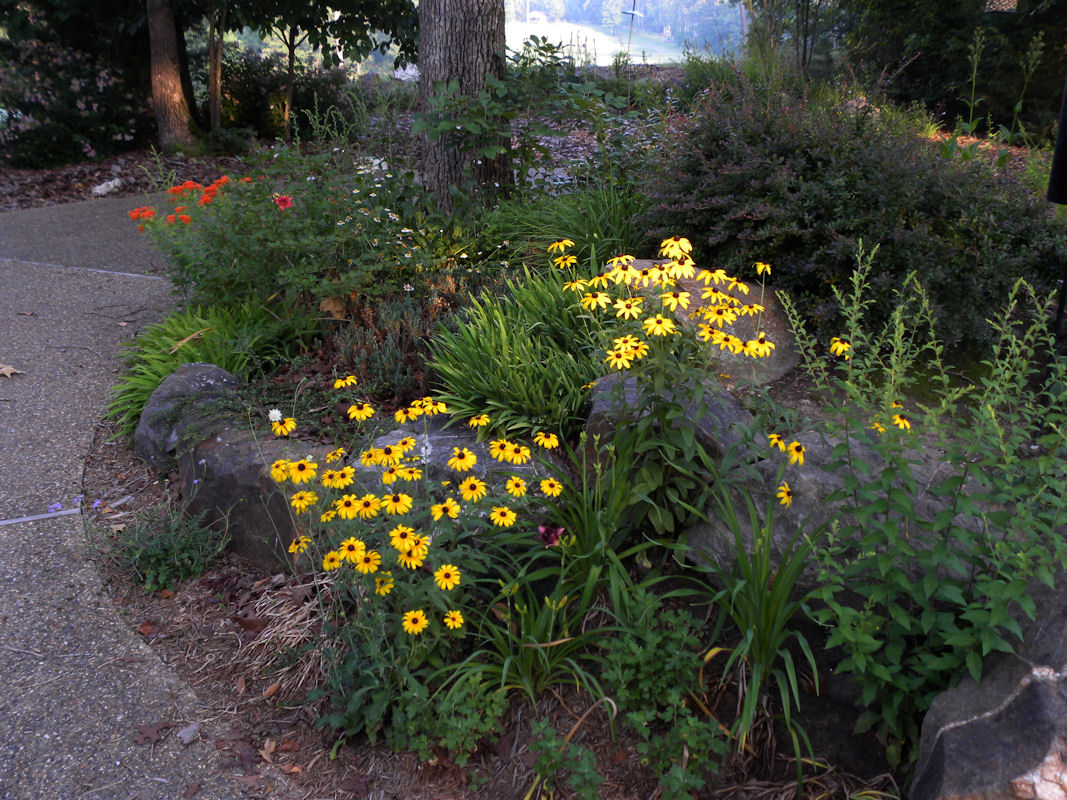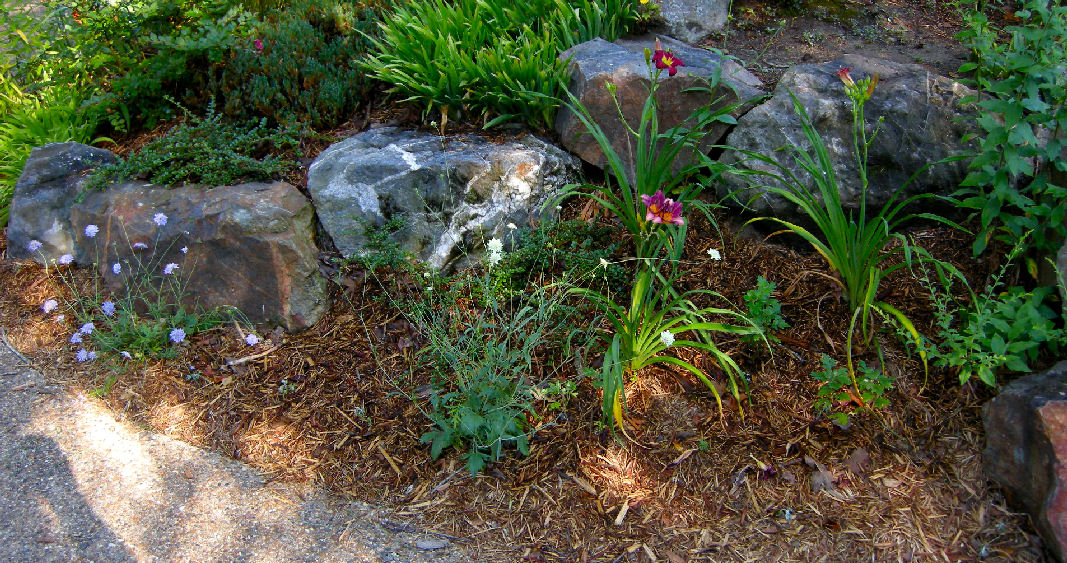Black-eyed SusanRudbeckia hirta
They are very competitive and can push other plants out of an area, but because of their size, should not be difficult to control. Also, they are (usually?) biennial: the first year they grow a rosette, which is a group of leaves growing from the center, low to the ground. In the second year, the plant sends up flower stalks. At the end of the second year, the plant dies. Some sources say that it may be an annual, a biennial, or a short-lived perennial, though I have not found a source that explains these possible variations. According to University of Texax, Black-eyed Susans are highly deer resistant. Aphids eat the leaves. Some species of fungi grow on the roots of Black-eyed Susan, pulling nutrients from the roots, but at the same time, passing nutrients to the plant from the soil.
June 2, 2010
June 20, 2009
|

